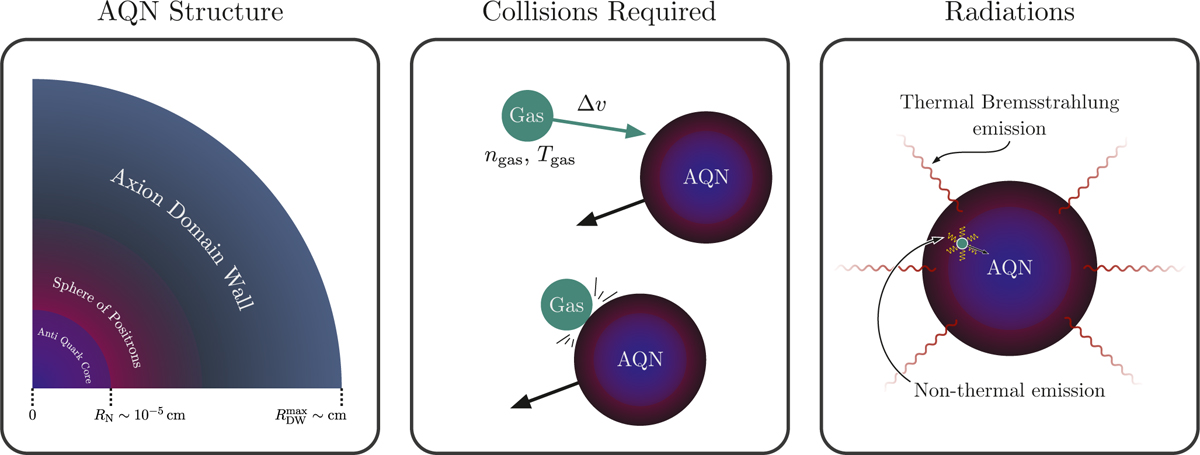Fig. 1

Download original image
Schematic sketch for the antimatter-AQN’s internal structure (not true to scale) with an indication of typical sizes (left panel) and the processes, which lead to the different radiation signatures (middle and right panel). The antimatter-AQN consists of a core of anti-quarks surrounded by positrons. When colliding with the ambient gas, the antimatter-AQN heats up and radiation occurs, which depends on the speed at which the collision occurs, the gas temperature and density as well as the ionization state of the gas. The right panel shows the two key emissions, namely thermal and non-thermal emissions. From an incoming proton (green, small circle), 2 GeV of energy will be available after collision with the AQN. Through annihilation, energetic quarks and gluons are produced and stream either deep within the nugget (around 90% of the 2 GeV) or toward the nugget surface (around 10% of the 2 GeV). Quarks and gluons, which remain inside, will contribute to the thermalization of the nugget. Heat will be transferred from the core to the electrosphere which cools down via thermal Bremsstrahlung emission. Quarks and gluons, which proceed to the surface without thermalization, can transfer energy to positrons and produce non-thermal emission.
Current usage metrics show cumulative count of Article Views (full-text article views including HTML views, PDF and ePub downloads, according to the available data) and Abstracts Views on Vision4Press platform.
Data correspond to usage on the plateform after 2015. The current usage metrics is available 48-96 hours after online publication and is updated daily on week days.
Initial download of the metrics may take a while.


